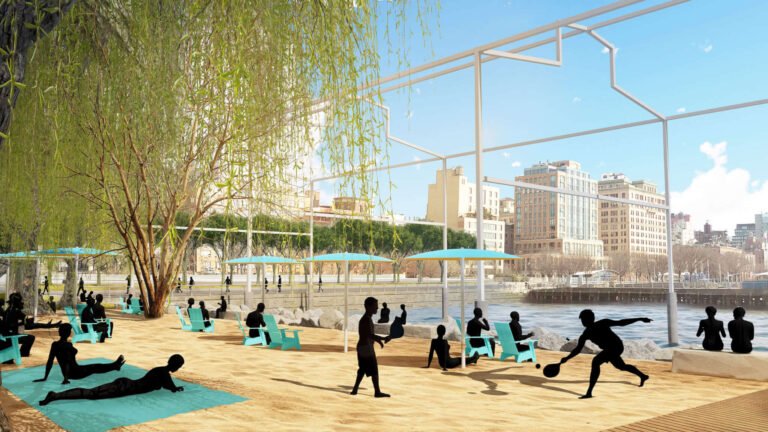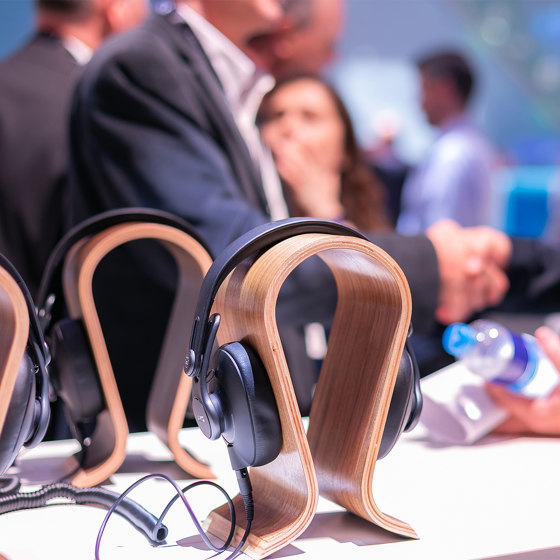An exhibition at the Children’s Museum of Manhattan stages installations “to reinvigorate connection”
A two-story structure wrapped in murals, a surrealist arrangement of fragmented house interiors, and a neon pink cove furnished with an arboreal sculpture are among the installations on view—and ready for hands-on exploration—at the third iteration of Inside Art: Create, Climb, Collaborate at Children’s Museum of Manhattan (CMOM).
Presented on the ground floor of CMOM’s current (but not forever) home on the Upper West Side, the exhibition comes following two years of pandemic-forced isolation and social distancing, with children eager to socialize and interact “in a physically immersive environment, free from ‘distancing tape’ and other traditional barriers,” as David Rios, CMOM Director of Public Programming and Curator of Contemporary Art, put it in a press statement. Each of Inside Art: Create, Climb, Collaborate’s 12 featured artists were commissioned by the museum to design interactive structures promoting play and creatively along with murals, paintings and other site-specific works.
“Inside Art: Create, Climb, Collaborate offers visitors unrestricted access to artworks that are beautiful, complex, and challenging; to working artists with unique styles and stories; and too opportunities to experiment with diverse materials and methods,” Rios added.
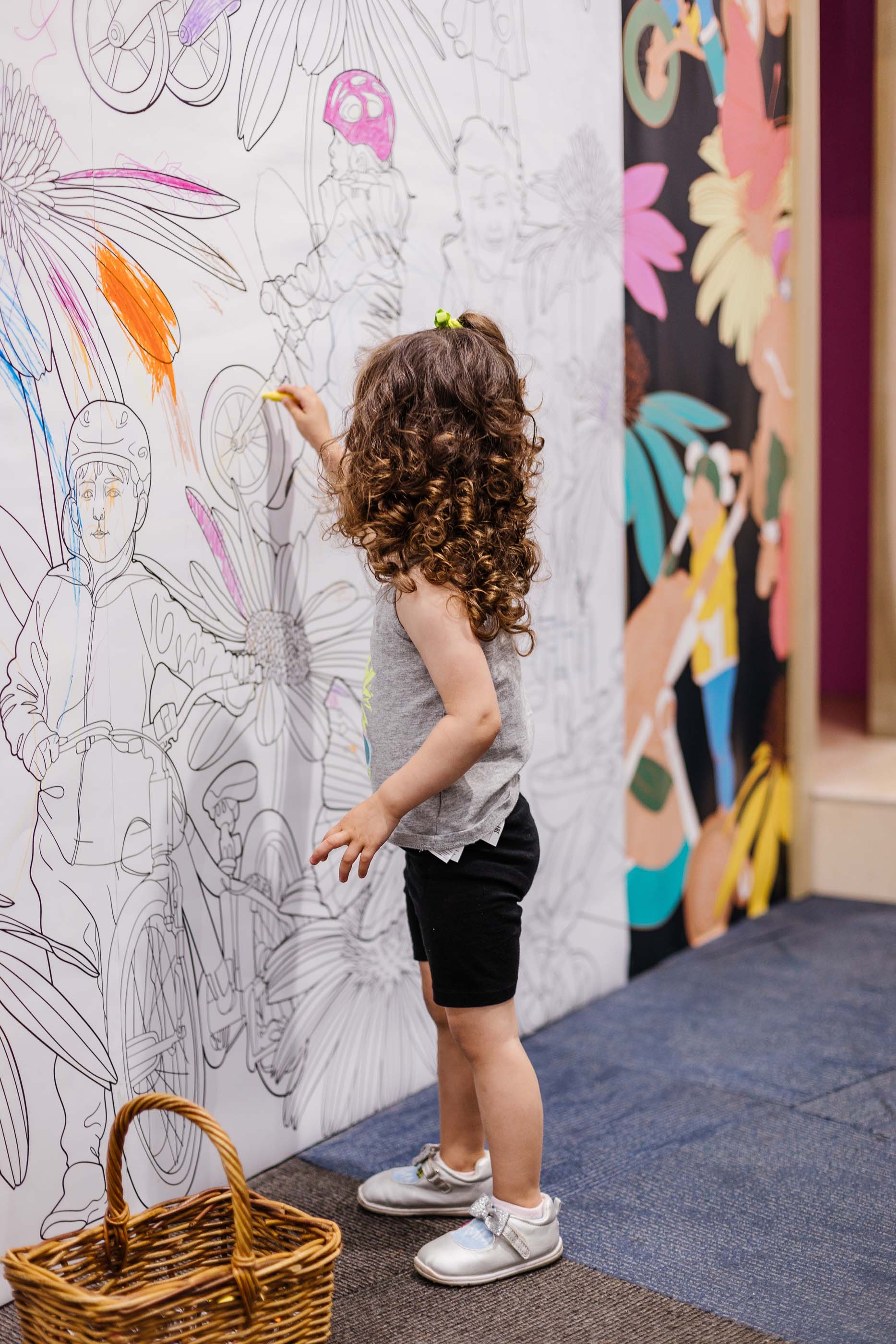
Anchoring the exhibition is City Canvas, a multi-story installation designed by Berlin-based studio BARarchitekten. The plan of the structure mimics that of a mix-use community building. The idea for City Canvas initially came to Lizzy Martin, Director of Exhibits at CMOM, after seeing children interacting with a similar installation at a children’s museum in Germany.
“So when we had the opportunity to have this new installation here at CMOM, we reached out to the Berlin architects (BARarchitekten) and we were able to ask them ‘is it possible for us to replicate it here in New York?’” Martin, told AN.
And the rest, as they say, was history.
After extensive collaboration with BARarchitekten and input from kiddos, the two-story structure was realized. City Canvas allocates areas for reading and play; one of the entrances leads into a room featuring a vivid mural by Francisco Donoso. On the first floor, acrylic murals cover three walls of an “artist studio” where visitors can color and draw on the murals with felt tip markers. Chilean-born artist Catalina Schliebener created the murals by piecing together clippings from Disney coloring books from her childhood in the ’90s. The collage was then scaled up to fit the dimensions of the studio. Schliebener, who is also a preschool teacher, drew from her experience working with young children. The artist told AN having her piece installed in the children’s museum “is a dream.”
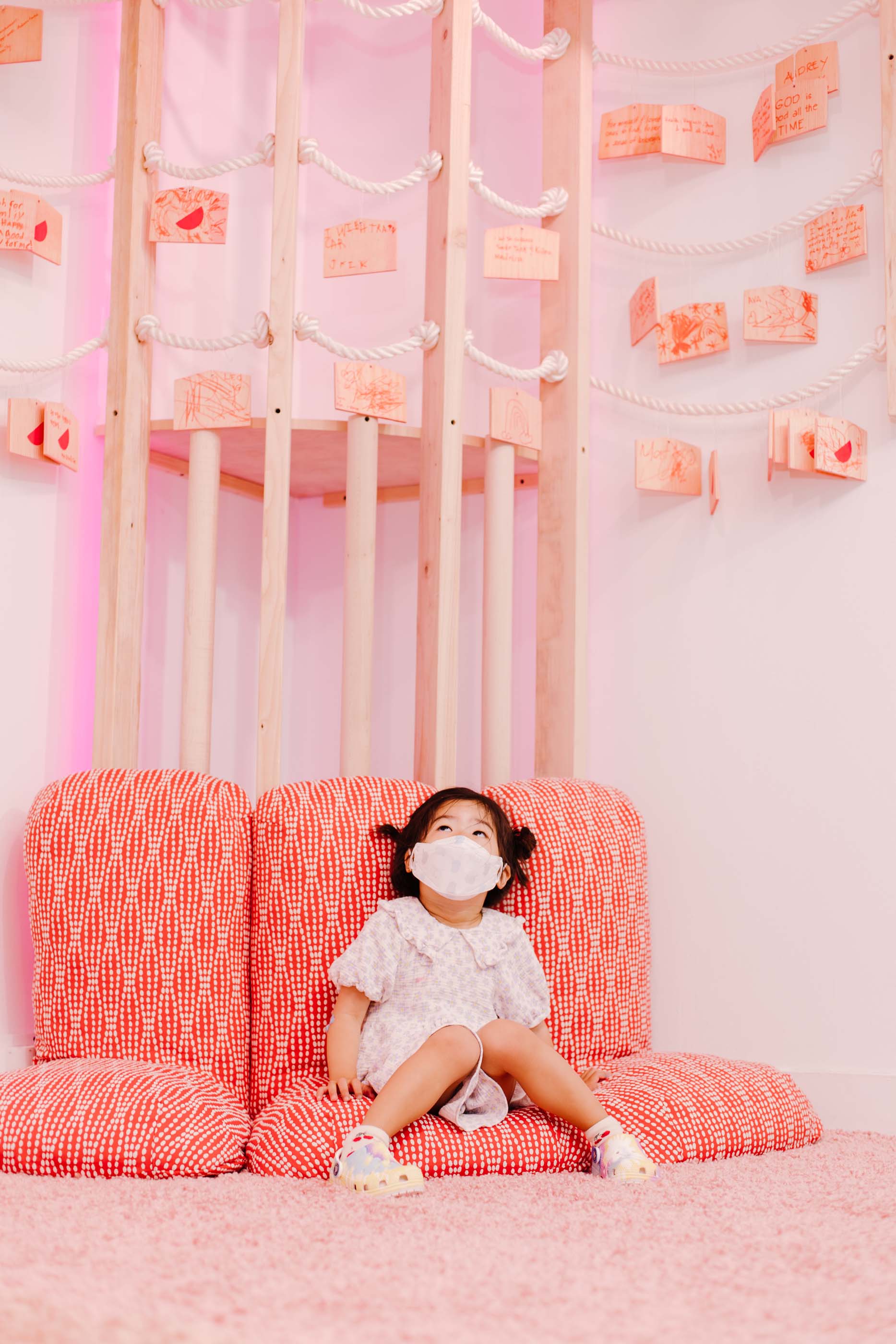
On one side of the wooden volume’s facade is another interactive mural, Driving the Future by Ebony Bolt, which visitors are invited to color using dry-erase crayon. Also installed on the City Canvas facade is an iridescent tessellation of brightly colored acrylic pieces by Armita Raafat, who drew inspiration from muquarnas, an elaborate decorative device in Islamic art and architecture. Many notable examples of muqarnas can be found in Iran, where Raafat grew up. The artist reinterpreted the historic art form through contemporary material, with the input of her seven-year-old daughter.
“Kids are very imaginative,” Raafat said, noting that she wanted to create a piece that would get kids to engage with “their own creativity, their own storytelling.”
Similar to Raafat, Aya Rodriguez-Izumi also drew from her own childhood experiences growing up abroad to envision Wish, a sculptural piece that takes cues from the Japanese tradition of hanging ema, wooden plaques inscribed with wishes, in shrines. Wish invites visitors at CMOM to inscribe their own desires on wood plaques, which are then hung on the tree-like installation.
“I’m always interested in pulling more people into sharing different communal experiences,” said Rodriguz-Izumi. “A big part of this is folks coming and reading the other wishes.”
Wish is in its third iteration; one of its predecessors was installed at PULSE in Miami Beach in 2017.
Also on view as part of Inside Art: Create, Climb, Collaborate is a design by Madrid-born artist Isidro Blasco, which comprises a twisting accumulation of fragmented interiors. While the stark white of Accumulation of Houses (except for a few additions of colored tape) is a dramatic contrast to the rest of the exhibition, it’s a fitting choice that echoes the customizability at the forefront of many other projects on display.
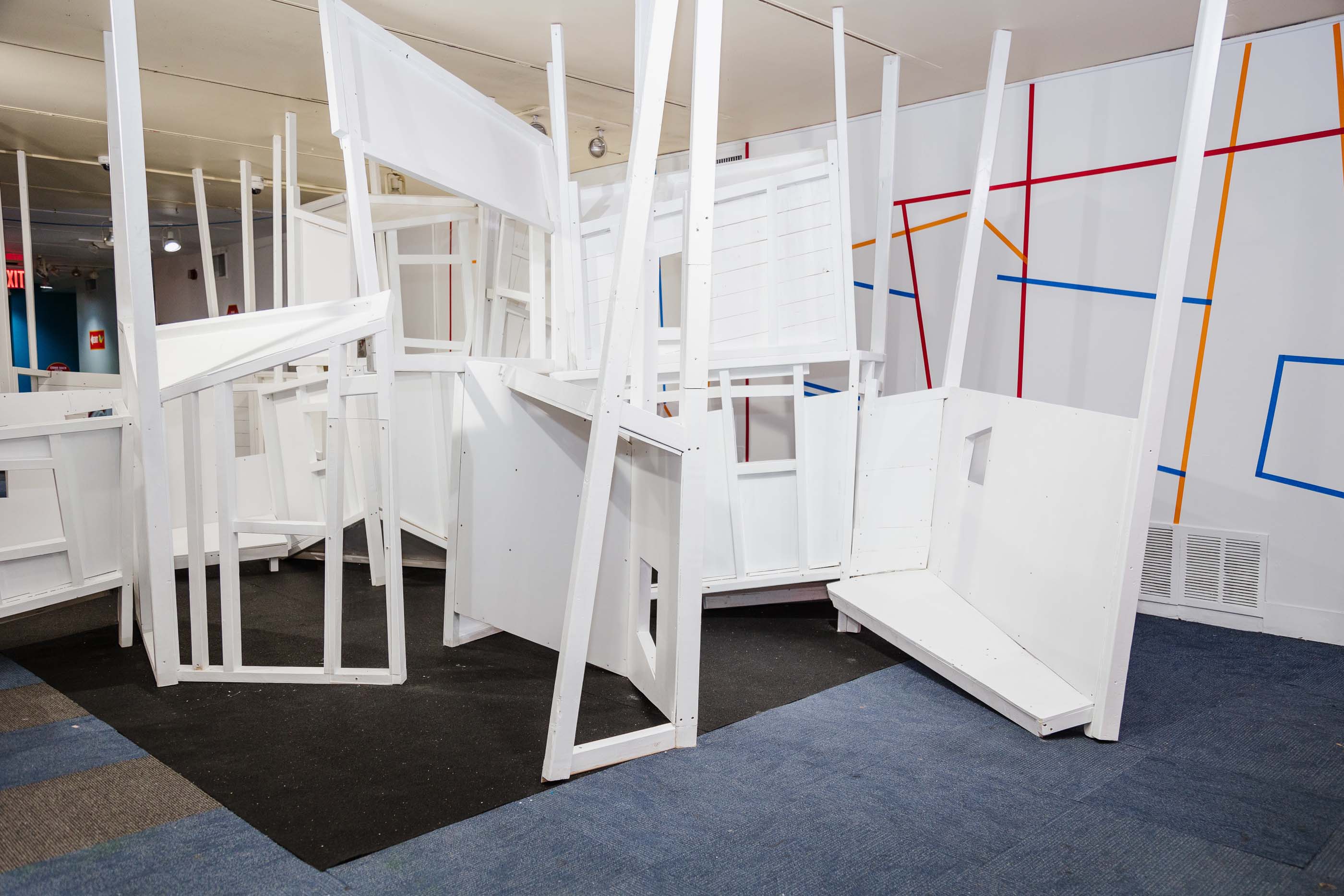
“It is like a canvas for anybody to project their own sense of home or space,” Blasco explained.
The piece is also strikingly surreal; Blasco replicated different corners of his house and brought the casted fragments to the museum.
“I started playing with them (the individual pieces) like a puzzle,” Blasco told AN. “I started finding the connections and the best way to fit them.” The result is also an enticingly climbable structure for kids to climb on. Despite its precarious appearance, the structure is quite stable, fastened in place by many vertical support beams, which double as handles for kids to grab onto.
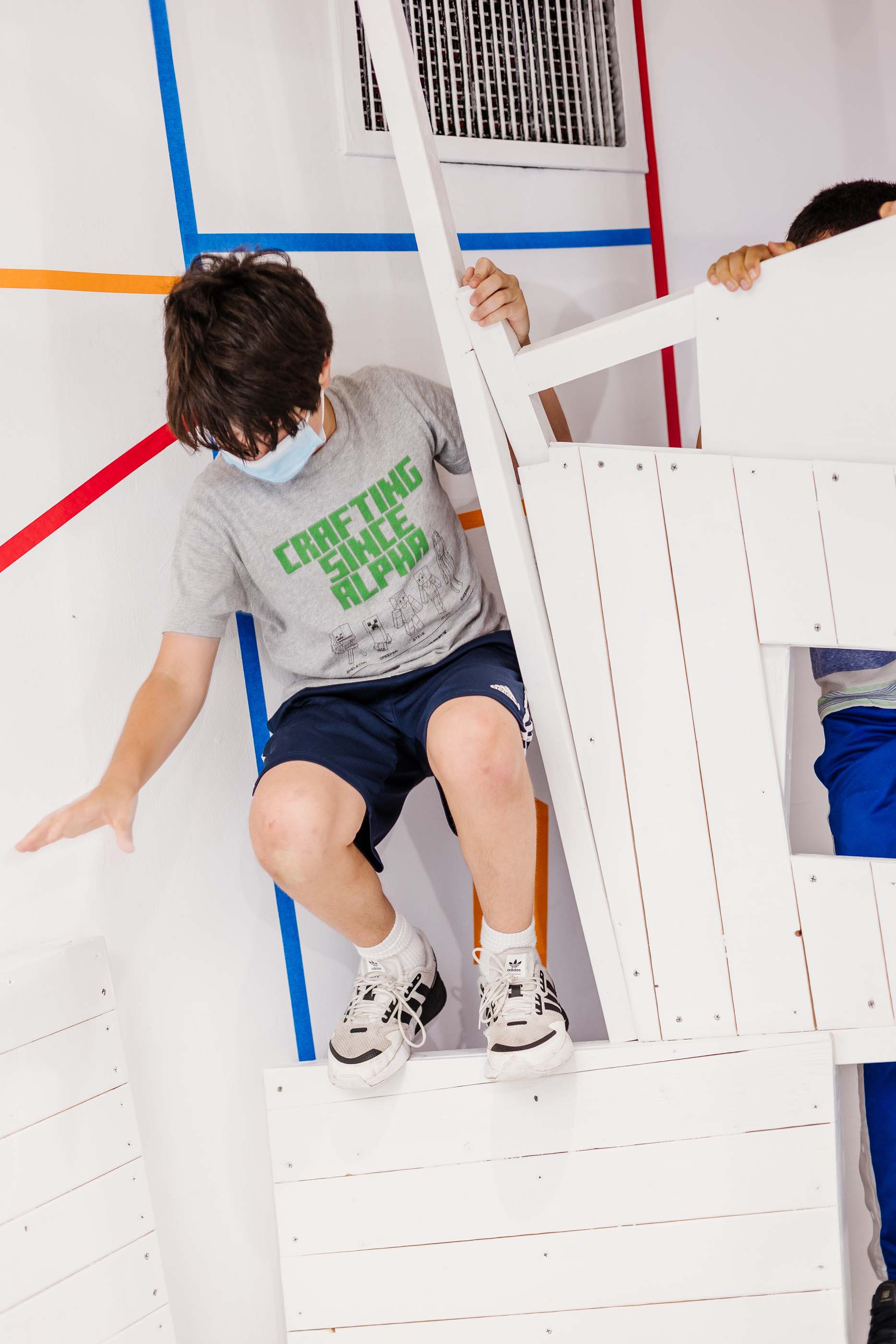
Other programming presented in tandem with the exhibit includes guided art making sessions and activities that allows visitors to engage with the individual pieces—and one another.
“In the end, we learned that kids need to be together again, especially now…they need to be connected, they need to reinvigorate connection [and] share space,” Rios said.

